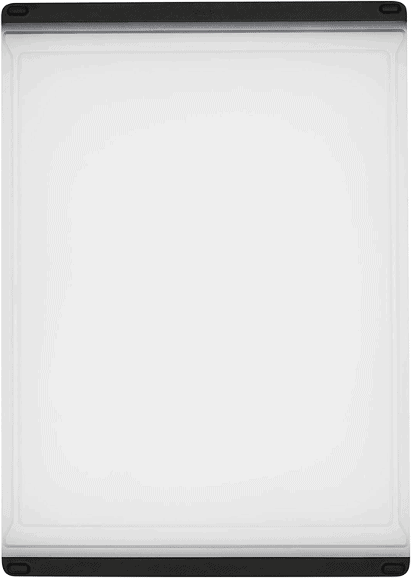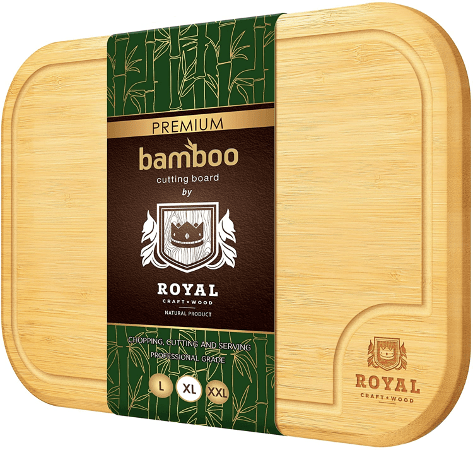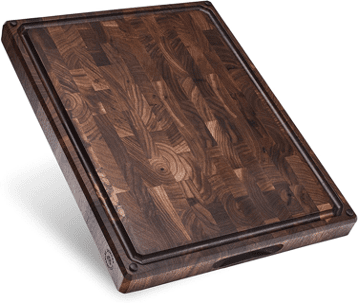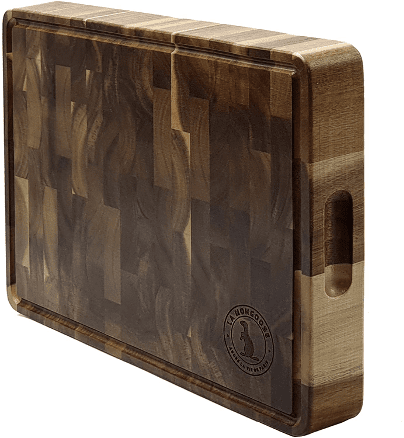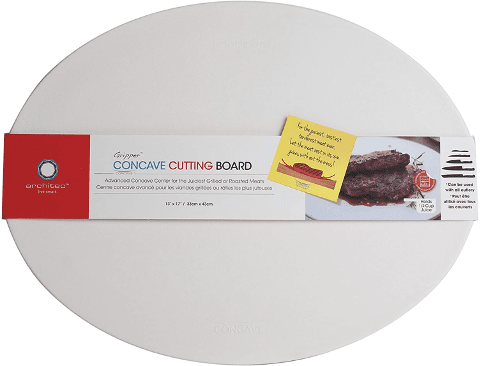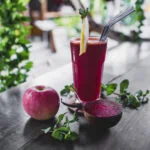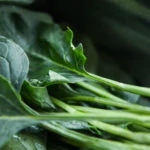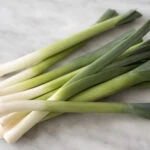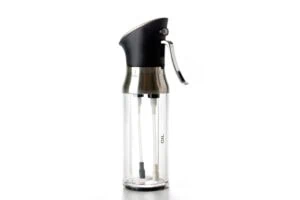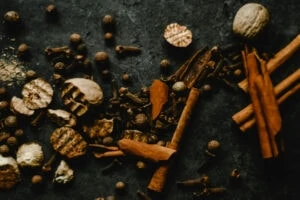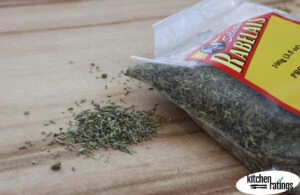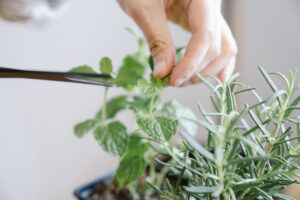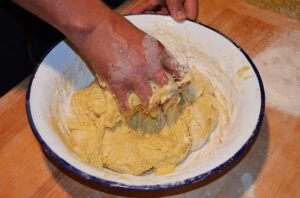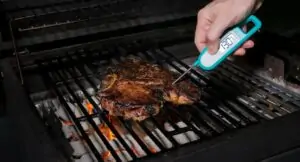When it comes to essential kitchen tools, we must include a reliable cutting board on the list. Every cook needs a cutting board for safe food prep, whether at home or in a professional kitchen.
If you find yourself working a lot with meat in the kitchen, a good cutting board can make it a much more enjoyable experience! Plus, having a cutting board dedicated to meats will make you a much safer cook, too.
But why do you need a separate cutting board for meat? And what features do you need to have the best meat cutting board experience?
We’re getting into all that and more in this guide right here! Let’s explore what makes certain cutting boards the best cutting board for meat. Then, we look at a meat cutting board buying guide and our top picks for the best meat cutting boards out there today.
What is a Cutting Board?
Before we dive in, let’s get the basics covered by learning what exactly a cutting board is.
A cutting board is a single board made of durable material (things like plastic, wood, or glass) on which you would cut your food. Cutting boards protect both your counter and your knives during food prep involving cutting, slicing, and dicing. The foods you cut on a cutting board include things like bread, meat, vegetables, fruit, cheeses, and more! Whether you need to chop up carrots or carve a whole turkey, you should do so on a cutting board surface.
Cutting boards come in all shapes and sizes to suit the storage spaces and style of their owners. You can find cutting boards that are highly stylized or simple ones designed more for efficiency than aesthetics. There’s something for everyone when it comes to buying cutting boards.
Why Do You Need a Meat Cutting Board?
As a cutting board is a simple tool, you may wonder why you’d need one for meat specifically. If you cook meat regularly, you need at least two cutting boards: one for meat and one for everything else. Professional kitchens break down their cutting boards even further for specific food types.
You need a specific meat cutting board to avoid cross-contamination in the kitchen. Controlling harmful bacteria is a super important part of the cooking process. One of the easiest ways to spread bacteria in a kitchen is by cooking with raw meat.
Whether it’s steak, poultry, or even seafood, all raw meats carry bad bacteria. If you’re cutting and prepping it raw, you need to prep it on a safe surface, like a cutting board. By having a cutting board for meats, you won’t accidentally prep your vegetables on the same bacteria-covered board you use for meat.
Meat cutting boards will also often be made of materials that are safer and easier to clean. While you can get a wooden cutting board for meat, most cooks opt for materials like plastic. Plastic isn’t porous, so, unlike a wooden board, there’s a less likely chance of bacteria being absorbed and sticking around after your cutting board has been washed and sanitized.
When it comes to cooking, everything you do should have safety in mind. Cooking can be a dangerous process, between the hot temperatures, sharp knives and tools, and the bacteria that can come along with certain foods. Having a meat-specific cutting board can help you cook safer and healthier, reducing your risk of food poisoning or cross-contamination.
Meat Cutting Board Buying Guide
Before you buy your meat cutting board, read through this buying guide! These are the features you’ll want to keep in mind if you want to buy the best product possible.
Material
The material of your cutting board matters a lot, especially when it comes to choosing a cutting board for meat. As we touched on above, working with raw meat means a lot of exposure to harmful bacteria, so you want a nonporous cutting board material that you can sanitize in your dishwasher.
Plastic
Our top material recommendation is plastic. Plastic is a nonporous and dishwasher-safe material, making it a great choice for raw meats. However, some chefs don’t like plastic, as super sharp knives can, over time, damage the surface. This means these cutting boards will need to be replaced more frequently.
Wood
Wood cutting boards are not generally recommended for meats, as they tend to be porous and not dishwasher safe. However, most chefs cannot resist their stylish presentation. Plus, wood boards are generally easier on knives, not damaging knife blades as much as other materials.
When shopping for a wood board, the most popular woods will be ones like teak, beech, or maple. Maple wood has become one of the top choices among chefs looking for a wooden carving board.
While you can find wood cutting boards for meat that are sealed to be food-safe, these can break down over time. These boards require care and super-safe cleaning if you are going to use them. Always hand wash your wooden cutting board and try to oil them regularly.
Pick End Grain Wood, Not Edge Grain
When looking for wood cutting boards, you might encounter edge grain and end grain styles of wooden boards. If you have the option, we always recommend end grain.
These two terms refer to how the wood is cut for the cutting board. Edge grain cutting boards are pieces of wood that are cut parallel to one another and then put together. These cutting boards are cheaper than end grain. While they are durable, they will damage knives faster and get damaged themselves quicker.
In contrast, an end grain cutting board is made entirely of end pieces of wood. These cutting boards will look like they have a checkerboard pattern. The wood fibers in these boards are much closer together and are less likely to dull out your knives. While they are more expensive than edge grain, we recommend them to increase the lifespan of your kitchen knives.
Bamboo
We also recommend going for a bamboo cutting board when looking at wood options. This eco-friendly material is extremely durable and can last a lifetime with proper care.
Bamboo is a super dense type of wood, making it more resistant to bacteria than other woods. However, they do need regular oiling to extend their lifespan. They are also not dishwasher safe and need careful handwashing to be safe for use with meats.
Composite
You can also find composite cutting boards made of resin. These boards are like a better version of plastic and are much more durable. However, it is super hard on knives.
Glass
You may also come across cutting boards made of glass but we don’t recommend them. Glass is the worst material when it comes to damaging knives, due to its hardness. Glass can also be way more fragile, and its slippery surface means raw meats will slide all over the surface. Though it is food safe, it is not the best working surface for meat cutting.
Cutting Board Size and Shape
The size of your cutting board will depend on your kitchen size and storage. The most popular shape of cutting board is a rectangle, and on average, will be around 18 inches x 12 inches. However, you can find much bigger and smaller depending on your needs. If you’re looking for a cutting board to carve turkeys, you may want a bigger size. However, if you are prepping smaller foods, like chicken breasts or sausages, you can get away with something smaller.
Though rectangles are the most popular, you can find other shapes! Some people prefer circular, rounded cutting boards. There are even more unique, fun shapes you can find if you want something a little quirkier. You can get stylish with your cutting board, so don’t be afraid to shake it up.
Juice Groove
Some meat cutting boards will come with additional features, like a handy juice groove. This is the most popular addition to meat-specific cutting boards. Both raw and cooked types of meat will produce some juice as you slice and prep. A juice groove is handy, allowing that liquid to run off away from the main surface of the board, and rest in the groove.
This will help make meat prep and carving a much cleaner process. Sometimes, carving meat can get your counters and yourself covered in liquid. On top of the mess, these juices can be a harmful source of bacteria, or lead to unintentional cross-contamination. The juice groove will make meat carving a much cleaner, safer process.
Non-Slip Edges
Whether you’re working with meat or vegetables, a nonslip edge is super important. Cutting boards are meant for cutting, meaning knives are almost always involved. If your cutting board isn’t securely placed on your counter, dangerous accidents can happen.
Some meat cutting boards will come with a type of non-slip grip on their edges. This is often made of plastic or silicone and keeps your cutting boards secure to your countertop. With these grips, you can cut with ease and keep your fingers much safer.
Cutting Board Accessories
Who doesn’t love accessories? To get the most out of your cutting board experience, you can throw in some accessories that help the cooking process. Some of the most popular accessories purchased alongside meat cutting boards are:
Safety Mats
A safety mat is a textured mat, often made of silicone, that goes under your cutting board to prevent slipping. This is a great purchase if your cutting board doesn’t already come equipped with a non-slip edge. They will give your board the grip it needs to be safely used on counters without sliding.
Scrapers
A scraper, sometimes called a refinisher, is a sharp blade used to take care of your cutting boards. These will often be wide, rectangular devices with a handle on top and a metal blade on the bottom. These are used to restore plastic cutting boards, scraping along the surface to remove the scratches and cuts knives can leave on plastic. These are great to improve the lifespan of a plastic cutting board, ensuring it can keep a smooth surface.
Cutting Board Oil
To take care of your wooden cutting boards, it’s a good idea to invest in cutting board oil. These oils are usually food-safe mineral oils and are used to restore cutting boards. Regular oil application will keep your wooden cutting countertops from becoming dried out, cracked, or warped. It will also help to keep it less porous, and safer to use with meats.
You need to be careful when oiling a cutting board! You may be tempted to use more conventional oils, like vegetable oils, but some oil can make your cutting board give off a bad taste to your food. To avoid any issues, it’s best to stick with mineral cutting board oils specifically.
Our Top Picks for the Best Meat Cutting Board
With many varieties to choose from such as at bamboo cutting boards, plastic boards, glass cutting boards, these are the top 5 best cutting boards:
1. Top Recommended Product: OXO Good Grips Utility Cutting Board
This cutting board from OXO has everything you need for a meat cutting board. This is a large, utility-sized cutting board made of food-safe plastic. This cutting board is dishwasher safe, is odor resistant, and won’t dull your knife blades.
The edge of this board has some amazing juice catchers to minimize the mess when carving cooked meats. It also has non-slip silicone grips on either side to keep it secure to countertops during chopping and slicing.
2. Best Budget Product: Extra Large Bamboo Cutting Board with Juice Groove
If you’re looking to stay on budget but still want a quality cutting board, we recommend this one right here. This cutting board is made of bamboo wood and is a large 18 inches x 12 inches in size. It’s the perfect size for carving most meats.
It also comes with a handy juice groove, which is great for keeping clean when cutting cooked meats. This board is double-sided, with a completely flat backside, making it work great as both a cutting board and a serving tray.
Best of all, this board has a 100% money-back guarantee, meaning you can return it if you try it and it doesn’t suit you.
3. Best Premium Product: Sonder Los Angeles Large Thick End Grain Walnut Wood Cutting Board with Non-Slip Feet
Those looking for a high-quality product won’t be disappointed by this cutting board from Sonder Los Angeles. This double-sided cutting board can truly do it all and is perfect for prepping anything and everything in the kitchen.
This board is made of durable end grain black walnut wood. It’s 1.5 inches thick, making it a stable and secure piece of wood. It also has secure rubber feet on both sides for increased stability.
On one side of this board, you’ll find a large smooth surface surrounded by a deep, grooved juice catcher, perfect for meat carving, as it can hold up to 3.5 oz of liquid before spilling over.
The other side of this board has no juice groove but instead has some neat curved sorting compartments. If you’re prepping vegetables you can easily slide them into those grooves to keep your surface clean when working with multiple ingredients. It’s also great if you want to use this board as a charcuterie board to hold things like nuts or olives.
This board is USA-made and would make a perfect gift for any cook! Plus, it has a 1-year warranty if you run into any issues while you use it.
4. Best End Grain Cutting Board: Acacia Extra Large End Grain Cutting Board
If you want an end grain cutting board, we like this one right here. This cutting board is durable acacia wood, is 17 x 13 inches in size, and is 2 inches thick! It’s a big durable cutting board that’s perfect for all your meat cutting needs.
This cutting board has a convenient juice groove, perfect when working with meats. It also has some convenient wooden grooves on its side so you can pick up and move the board easily. This way, you can carve up meat in the kitchen and carry it to the table to serve.
This board is acacia wood, so it is a lot denser than other woods, making it more hygienic for use with meats. It needs to be cleaned by hand, not in the dishwasher, and oiled regularly. However, with proper care, this board will last for years!
5. Best Round Cutting Board: Polyconcave, White
If you’re looking for a round cutting board for meats, we love this one. This is a circular, dishwasher-safe, plastic cutting board that’s perfect for work with meat. This board has convenient grips on it’s bottom side to prevent it from sliding while in use.
The top of this cutting board is a smooth plastic surface that is slightly concave. This will keep meats and juices in the middle of the board to prevent liquid spills and mess on counters. It also allows your meat to rest in its own juices for extra flavor.
Why do I need a specific cutting board for meat?
Raw meats can hold a lot of harmful bacteria. To avoid cross-contamination, it’s a good idea to have a cutting board in your kitchen that is for meats only. This will limit other ingredients coming into contact with raw meat germs.
Can I cut meat on a wood cutting board?
Yes, you can cut meat on a wood cutting board! Some chefs even prefer wooden cutting boards to other materials when it comes to cutting meat. However, for the safest cooking process possible, we recommend sticking to plastic or composite cutting board materials.
Wood cutting boards can be porous, making it harder to sanitize them. Plastic and composite are nonporous and dishwasher safe, making them the better option when working with raw meat.
How do I clean my meat cutting board?
The way you clean your cutting board will depend on the material. In general, you should clean any cutting boards with hot water and soap. However, if your cutting board is plastic, composite, or another dishwasher-safe material, we recommend you also put it in the dishwasher.
If you have a wood cutting board, never put it in the dishwasher. Always hand wash and dry, and oil it regularly to avoid having your board become dry, cracked, and warped.

